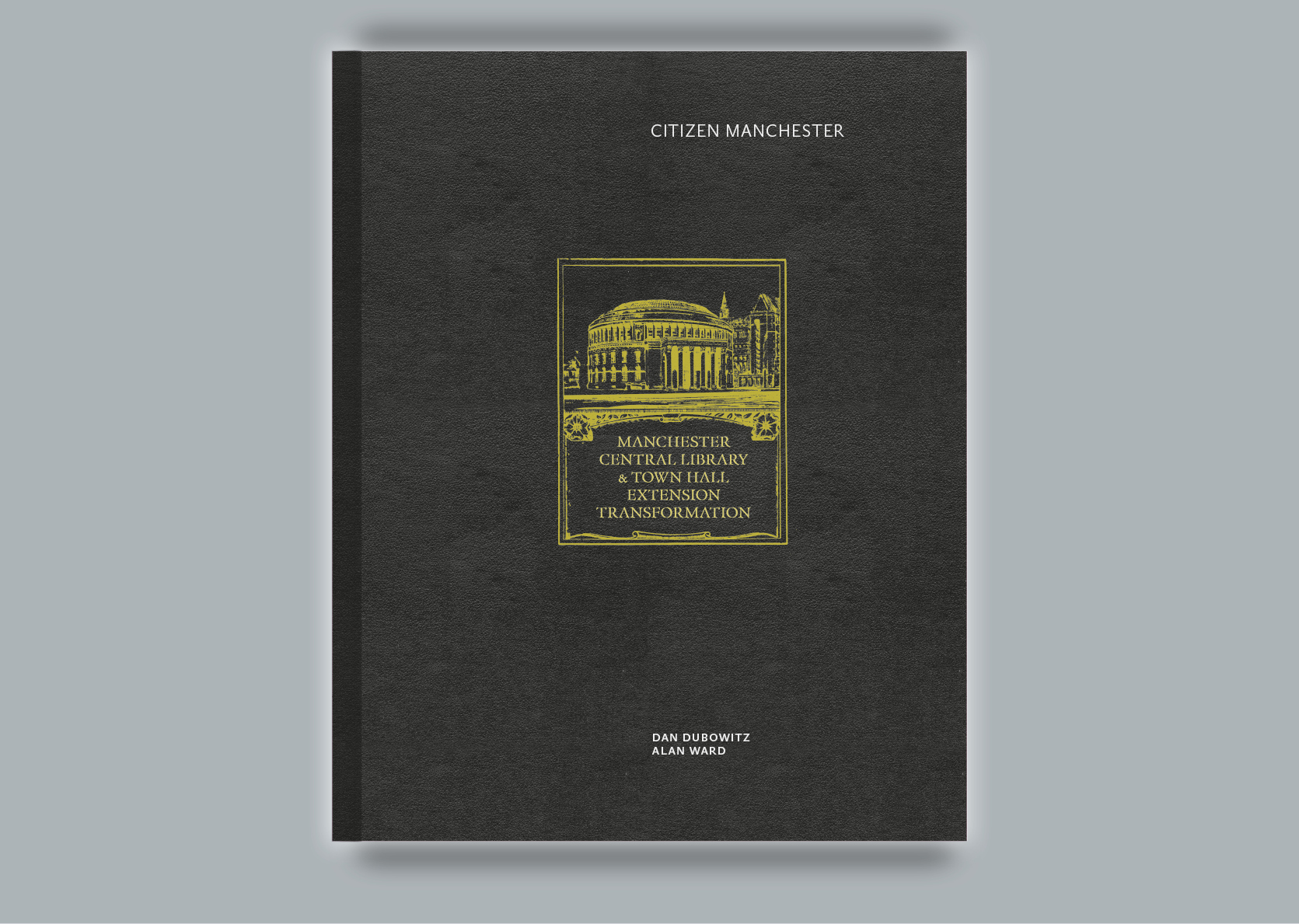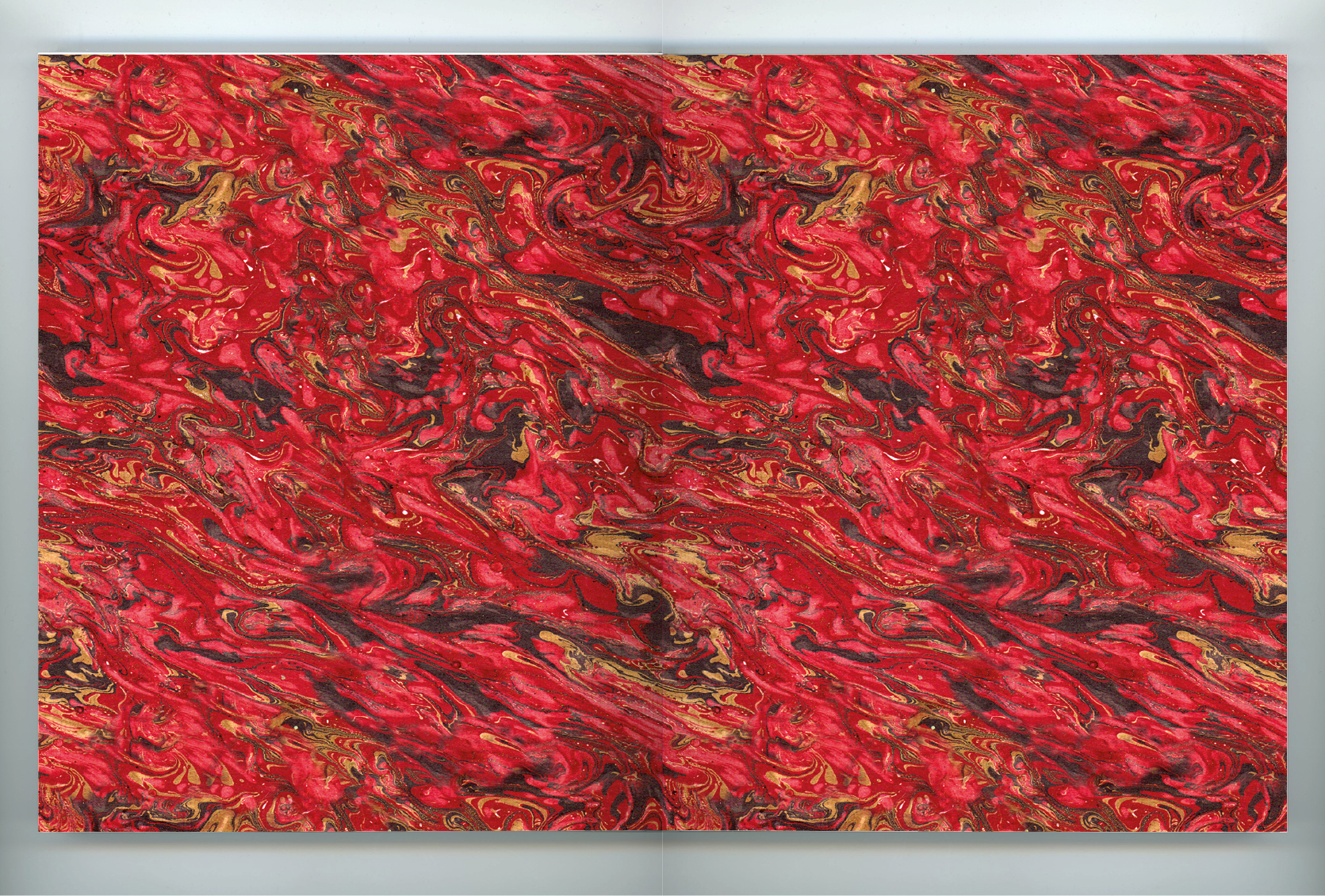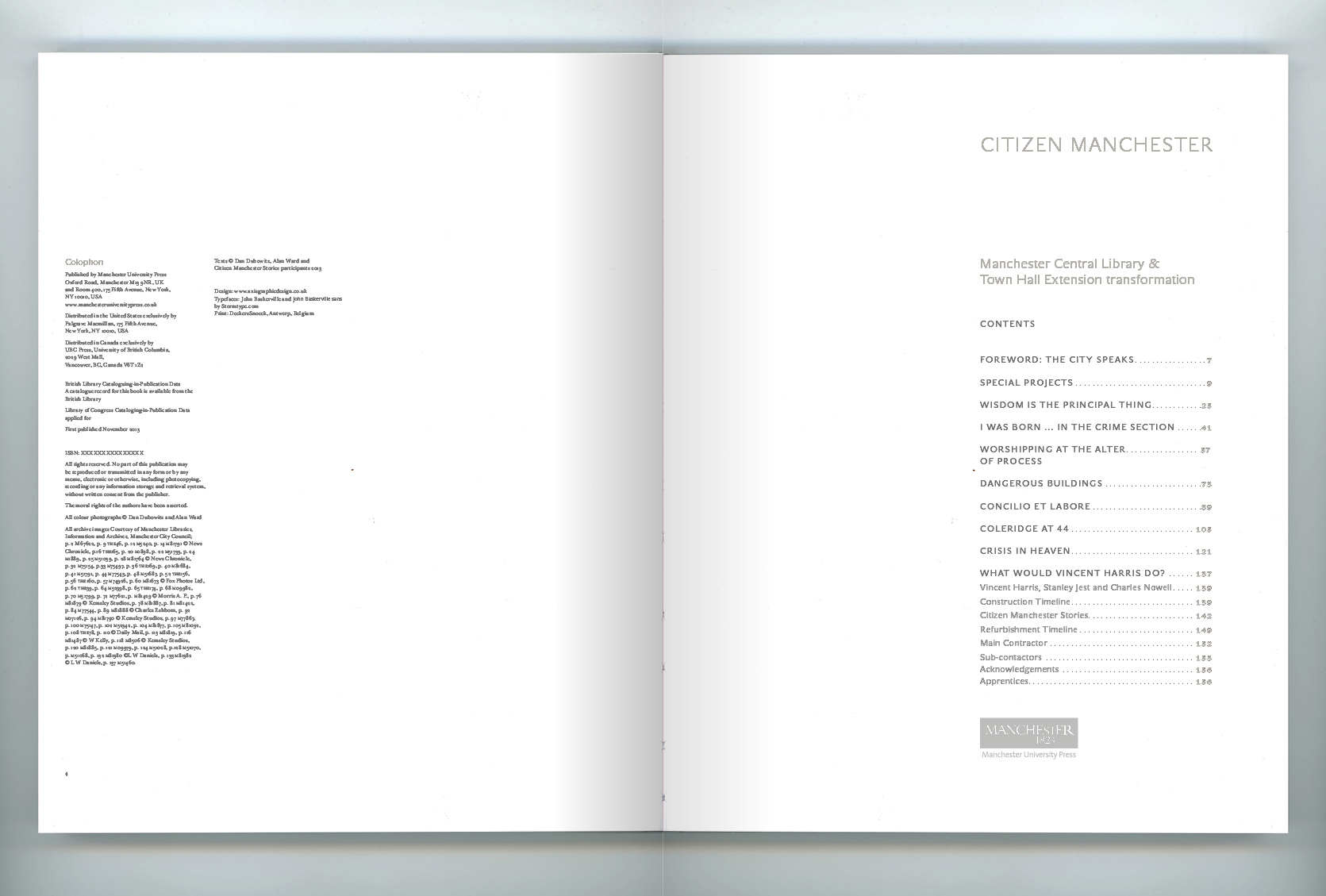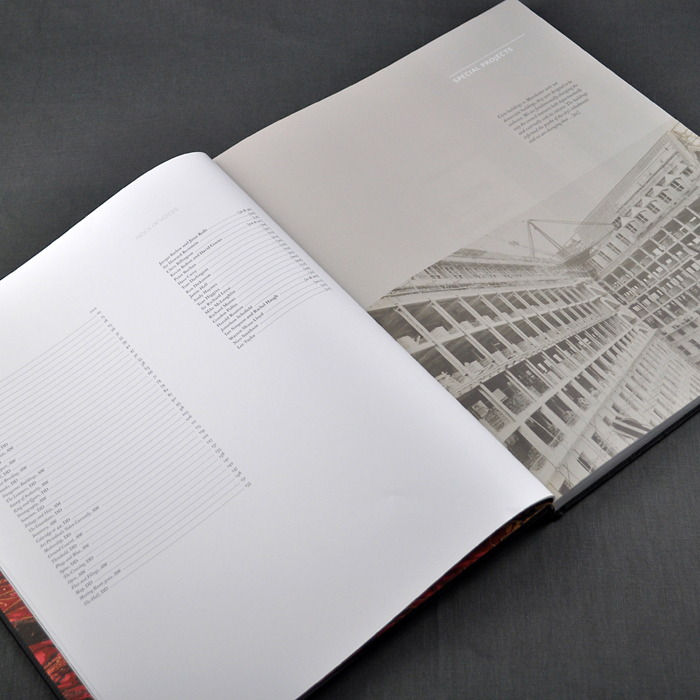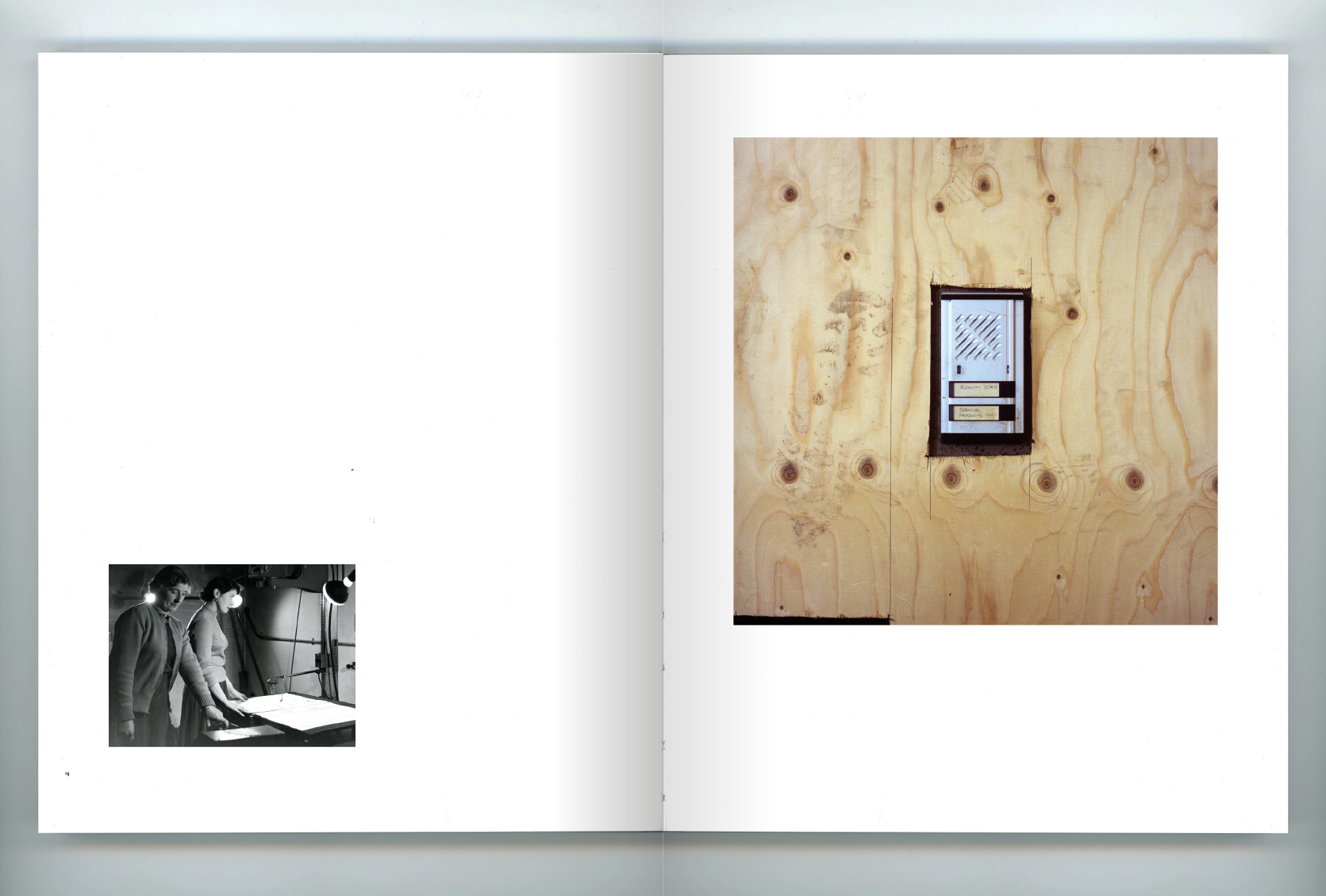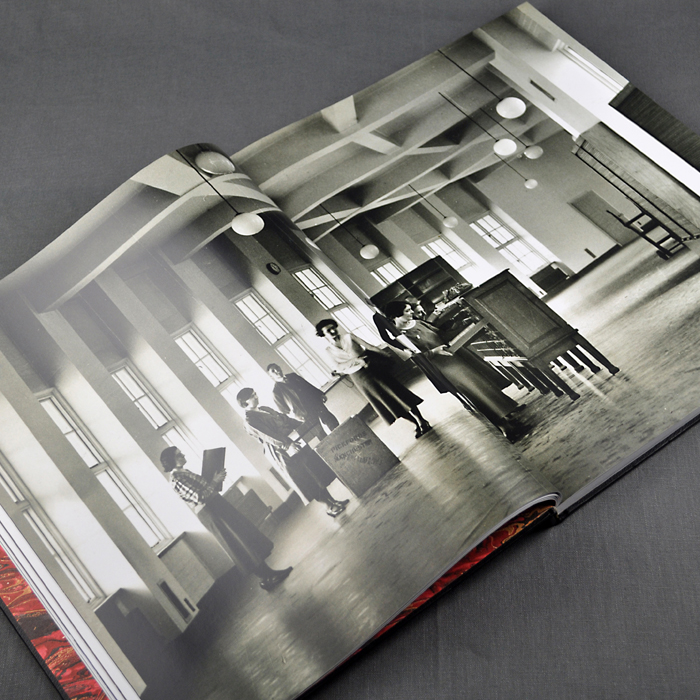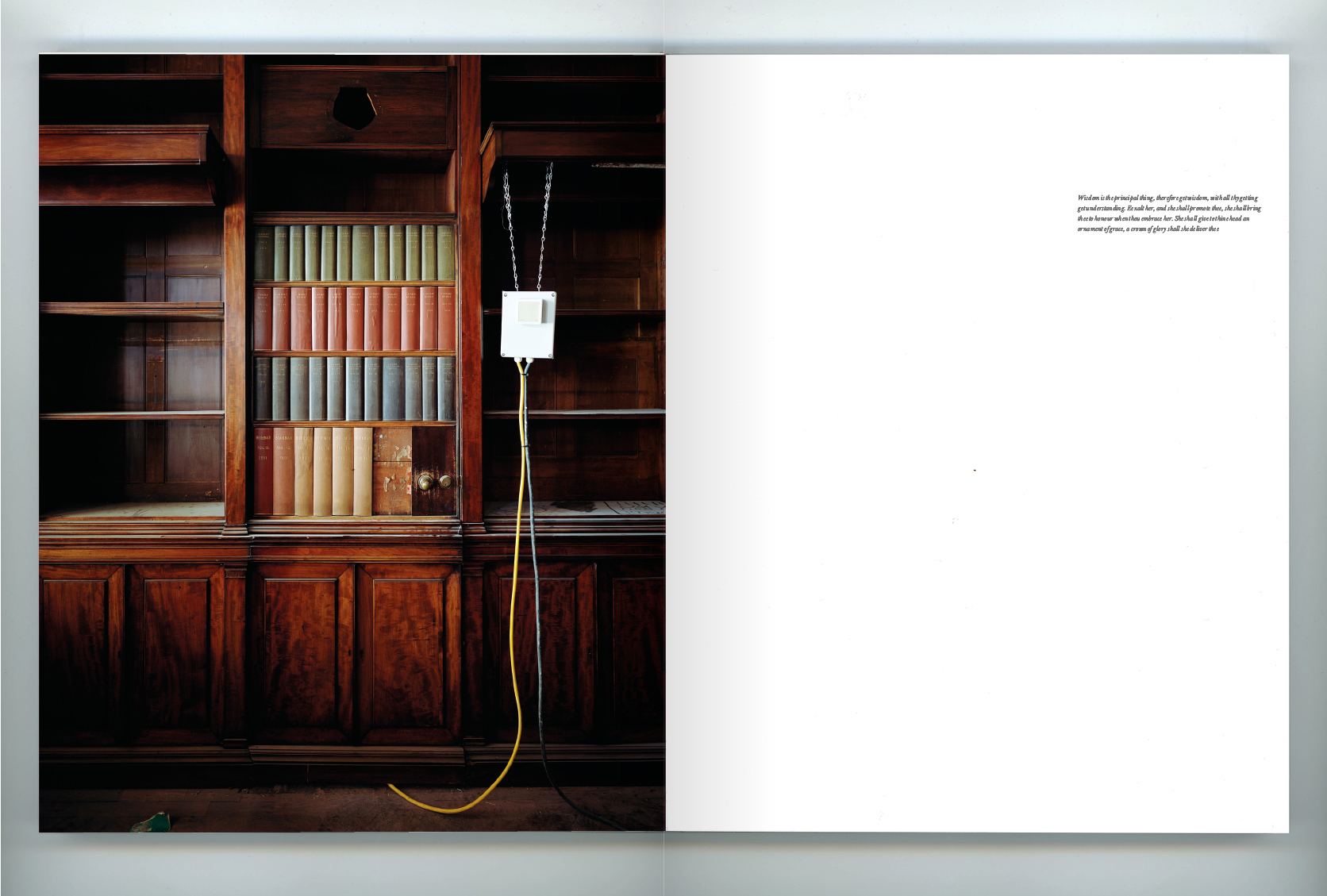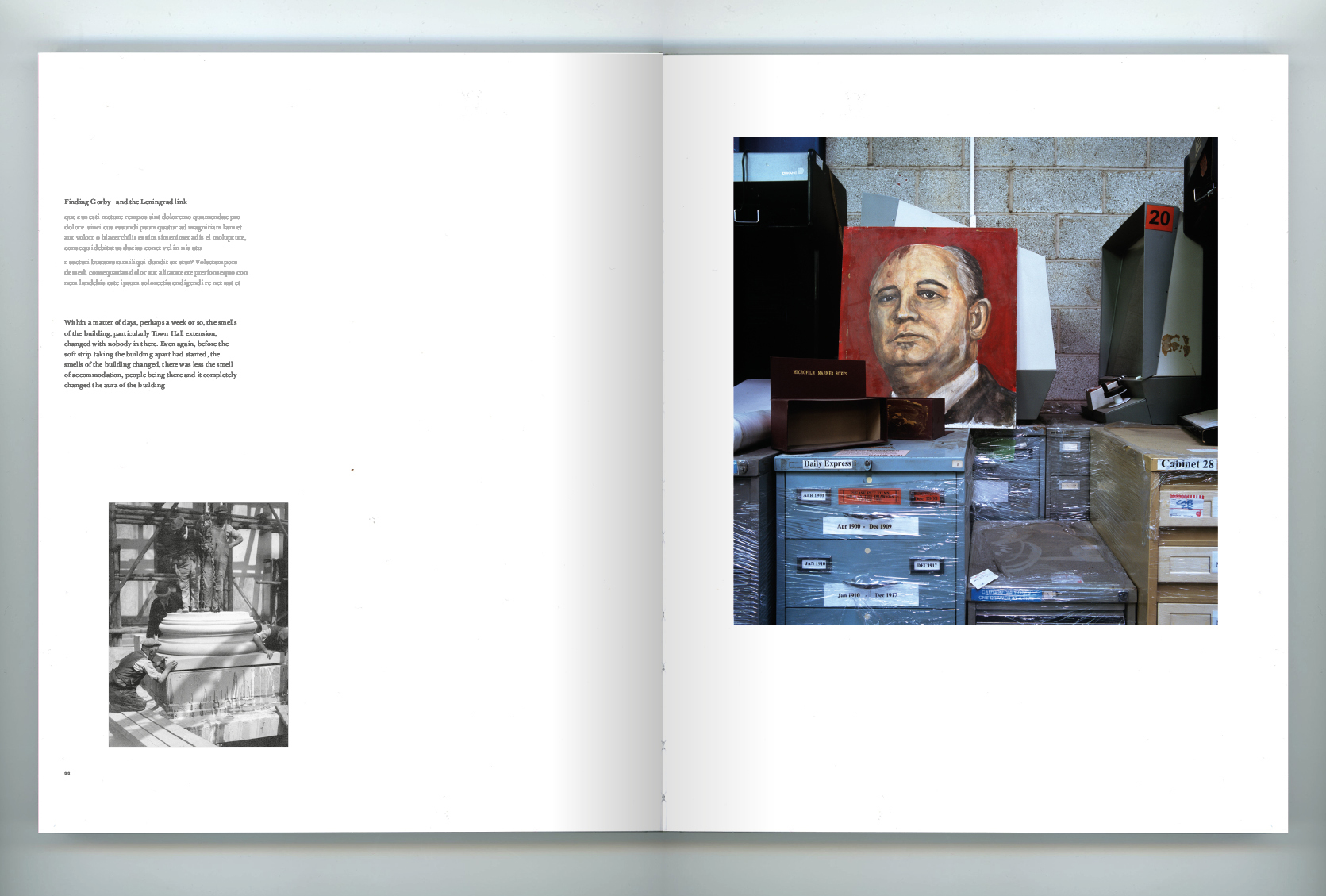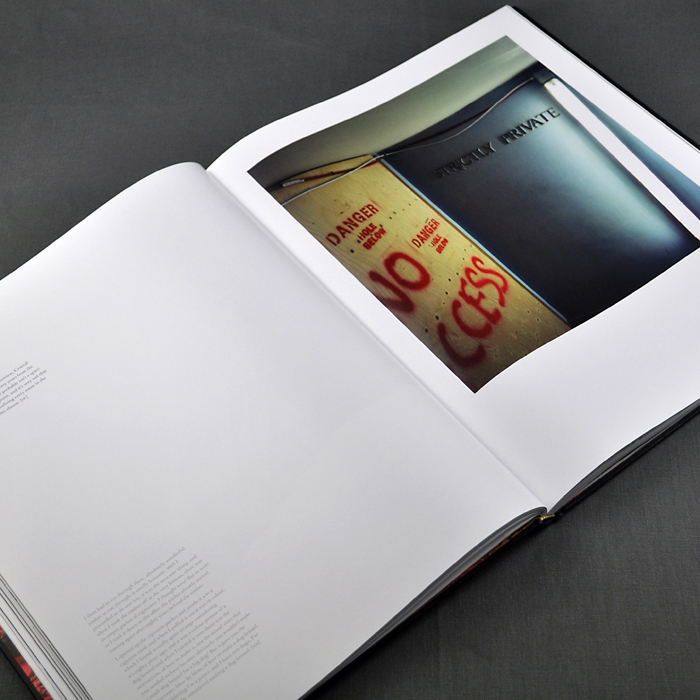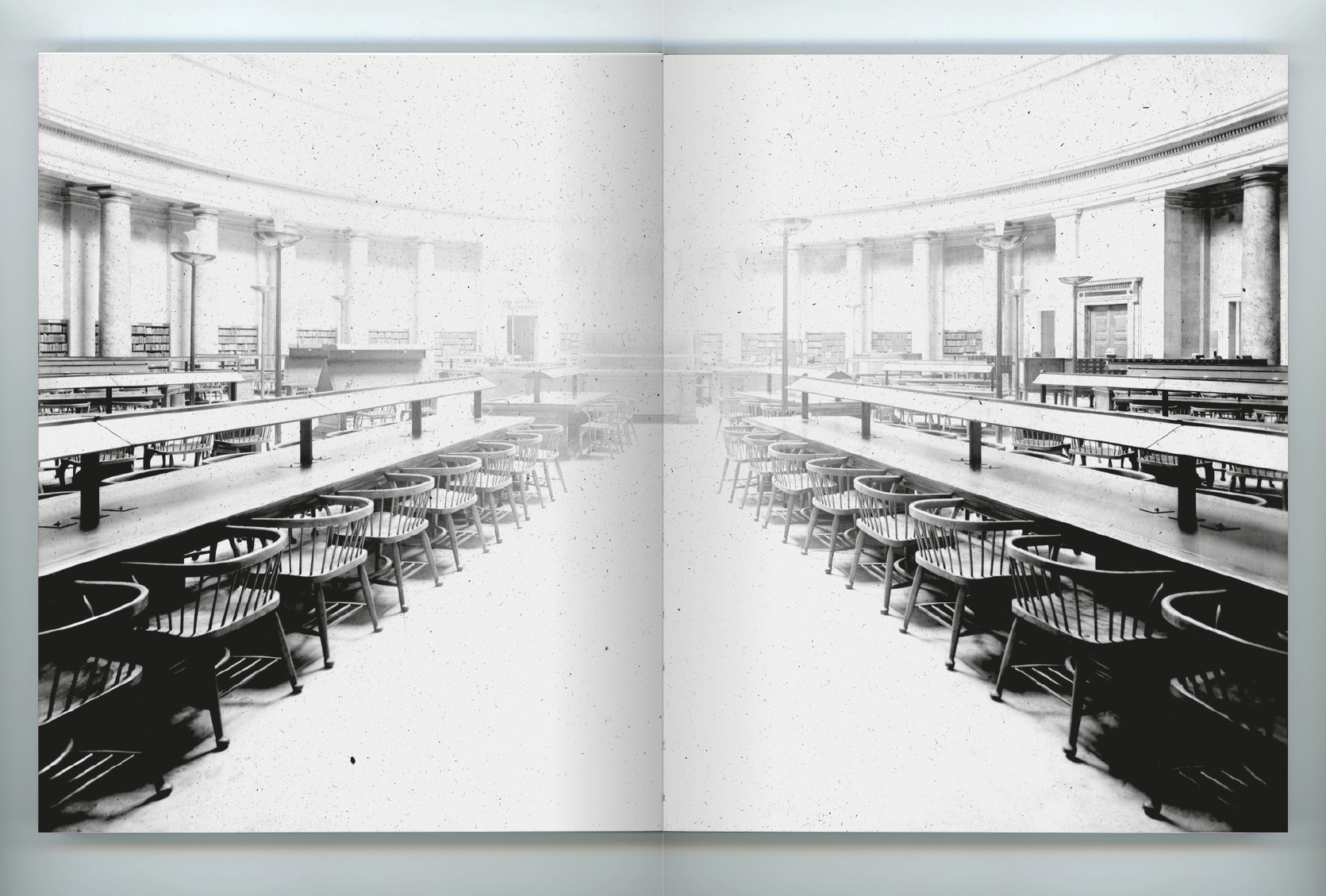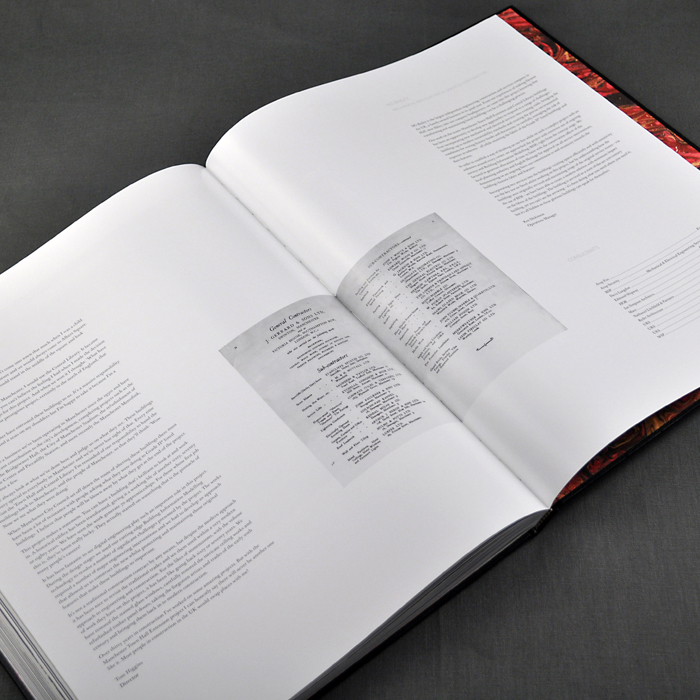Citizen Manchester was an 18 month project about the Central Library and the Town Hall Extention, commissioned by Laing O’Rourke to explore the meaning to Manchester of two of its most important civic buildings’ during transformation. This has resulted in a large format book of the same title published by Manchester University Press and a major exhibition of 36 site specific interventions in Central Library, the Town Hall Extension and the nearby Manchester Art Gallery.
It explores the relationship between a city’s civic buildings and its citizens. Through photographs, recording tales and research into the city’s archives, the work captured the moment when the public had been locked out of Central Library and the Town Hall Extension and the spaces had been reduced to the merest shells.
Provides glimpses into the buildings’ souls and reveals unexpected stories, the bookwork gives insights into the reciprocal relationship between people and place and reveals how the refurbishment of a building can go far beyond physical refurbishment.
Hardcover: 160 pages
Publisher: Manchester University Press
Language: English
ISBN-13: 978-0719095733
Dimensions: 37.4 x 30.4 x 2 cm
Citizen Manchester was shortlisted for the Roses Creative Awards 2014.
—–
‘Citizen Manchester’
Manchester Central Library and Town Hall Extension Transformation
In 2008, Manchester decided to embark on a counter-cyclical project, much as the city father’s had done in the last great recession, and invest significantly in two civic buildings that are a corner stone of the making of the first modern industrialised city, Manchester Town Hall Extension and Manchester Central Library.
Early on in this major redevelopment project artists Dan Dubowitz and Alan Ward were given privileged and open access to witness this transformational period in the life of two of Manchester’s iconic buildings by Laing O’Rourke. Through large-format photographs and interviews over a period of 18 months they captured the moment when the city’s citizens and workers had been locked out and the spaces were being stripped bare; revealing both a glimpse of what they had been and what they might become.
The artwork provides insights on the reciprocal relationship between people and place, and reveals how the refurbishment of a building can go far beyond physical refurbishment, and questioning the relationships between a city, its citizens and place.

